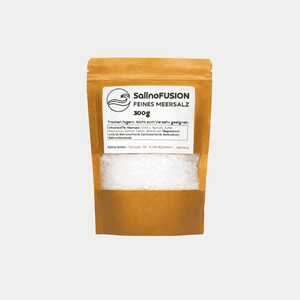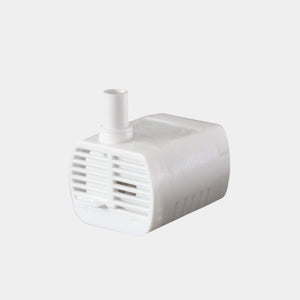In our hectic world, where stress and hectic pace are often the order of the day, we easily forget to pay attention to our breathing. Breathing is one of the most basic yet powerful functions of our body. Not only does it supply us with vital oxygen, but it can also serve as a powerful tool for stress reduction and health promotion. In this article, we delve deep into the world of conscious breathing and discover how we can significantly improve our well-being through simple techniques.
What makes breathing so special?
Breathing is a fascinating process that can be controlled both consciously and unconsciously. It is the bridge between body and mind, between the autonomic and volitionally controlled nervous systems. This unique property makes breathing an ideal starting point for positively influencing our health and well-being.
External respiration: Our gateway to the environment
External respiration, also called pulmonary respiration, is the process by which we take in oxygen from the surrounding air and release carbon dioxide. This gas exchange takes place in the alveoli, the tiny air sacs in our lungs. With each breath, we take in about 0.5 liters of air, which equates to about 12-18 breaths per minute for an adult.
Internal respiration: The cellular energy supplier
Internal respiration, also called cellular respiration, is the process by which absorbed oxygen is used to generate energy in the mitochondria, the "powerhouses" of our cells. Here, glucose is broken down into carbon dioxide and water with the help of oxygen, releasing energy in the form of ATP (adenosine triphosphate). Our body uses this energy for all vital processes.
How does breathing affect our stress levels?
Our breathing rhythm is directly connected to our nervous system. When we're stressed or tense, our sympathetic nervous system is activated, leading to faster, shallower breathing. In contrast, slow, deep breathing activates the parasympathetic nervous system, which promotes relaxation and recovery.
The vicious circle of stress breathing
In stressful situations, we often tend to engage in chest breathing, which primarily uses the upper part of the lungs. This type of breathing is inefficient and can lead to overactivation of the sympathetic nervous system, which further increases stress. A vicious cycle develops.
The power of abdominal breathing
Abdominal breathing, also called diaphragmatic breathing, optimally utilizes the diaphragm and enables deeper, more efficient breathing. It activates the parasympathetic nervous system and can reduce stress within minutes. Practiced regularly, abdominal breathing can significantly improve our resilience to stress.
Which breathing techniques can help us in everyday life?
There are a variety of breathing techniques that can help us reduce stress and promote our health. Here are some of the most effective methods, their characteristics, and specific benefits:
1. The 4-7-8 breathing
This technique, developed by Dr. Andrew Weil, is particularly effective for relaxation and as a sleep aid:
1. Breathe in through your nose for 4 seconds.
2. Hold your breath for 7 seconds.
3. Exhale through your mouth for 8 seconds.
4. Repeat this cycle 4 times.
Special features:
· The prolonged exhalation in relation to the inhalation activates the parasympathetic nervous system.
· Holding your breath temporarily increases the CO2 content in your blood, which has a calming effect.
Advantages:
· Reduces anxiety and promotes relaxation
· Helps you fall asleep
· Can lower blood pressure
2. Box Breathing
This technique is often used by competitive athletes and military personnel:
1. Breathe in for 4 seconds.
2. Hold your breath for 4 seconds.
3. Exhale for 4 seconds.
4. Hold for 4 seconds.
5. Repeat this cycle for a few minutes.
Special features:
· Equal time periods for all four phases create a sense of balance and control.
· The regular structure helps to focus the mind.
Advantages:
· Improves concentration and mental clarity
· Reduces acute stress and anxiety
· Can be used quickly in stressful situations
3. Alternating nasal breathing
This technique, which originates from yoga, is said to balance the two halves of the brain and have a calming effect:
1. Close the right nostril and breathe in through the left.
2. Close both nostrils and hold your breath briefly.
3. Open the right nostril and exhale.
4. Breathe in through the right nostril.
5. Hold your breath briefly again.
6. Open the left nostril and exhale.
7. Repeat this cycle for a few minutes.
Special features:
· Alternating activation of the left and right hemispheres of the brain
· Promotes nasal patency and cleanses the nasal passages
Advantages:
· Improves concentration and mental performance
· Can relieve migraines and headaches
· Promotes the balance between the sympathetic and parasympathetic nervous systems
Each of these techniques has its own strengths and can be particularly useful in different situations. The 4-7-8 breathing pattern is ideal for relaxation and falling asleep, box breathing is excellent for acute stress situations, and alternate nostril breathing is especially effective for mental clarity and balance. Experiment with these techniques and find out which one works best for you in different situations.
Wim Hof Method : Breathe healthy and strong
A particularly powerful breathing technique that has received a lot of attention in recent years is the Wim Hof Method. Named after its inventor, the Dutch "Iceman" Wim Hof, this method combines special breathing techniques with cold exposure and meditation.
How does Wim Hof breathing work?
Wim Hof breathing consists of three phases:
Controlled hyperventilation : 30-40 deep breaths, inhaling fully and exhaling only partially.
Breath holding : After the last exhalation, the breath is held for as long as possible.
Recovery breath : A deep breath is taken and held for 15-20 seconds before exhaling.
This cycle is usually repeated 3-4 times.
What effect does the Wim Hof Method have on the body?
The Wim Hof Method has a number of remarkable effects on the body:
Increase in pH : Controlled hyperventilation causes more CO2 to be exhaled, which leads to a temporary alkalization of the blood.
Activation of the sympathetic nervous system : This leads to an increased release of adrenaline and other stress hormones.
Strengthening the immune system : Studies have shown that practitioners of the method are better able to control inflammatory reactions.
Improve cold tolerance : Regular practice increases the body's ability to withstand cold.
Is the Wim Hof Method suitable for everyone?
While the Wim Hof Method can produce impressive results for many people, it is not suitable for everyone. People with certain health conditions such as cardiovascular disease, epilepsy, or pregnancy should definitely consult a physician before practicing.
How can conscious breathing promote our health?
The positive effects of conscious breathing on our health are diverse and scientifically well-documented. Let's take a deeper look at the various health benefits:
1. Stress reduction and improved mental health
Regular breathing exercises can lower cortisol levels and promote the release of feel-good hormones like serotonin and dopamine. This can reduce anxiety and depressive symptoms and improve overall mood. Studies have shown that just 15 minutes of daily breathing exercises over a period of eight weeks can lead to a significant reduction in anxiety symptoms.
2. Improve heart health
Deep, conscious breathing can lower blood pressure and increase heart rate variability, which is an indicator of good heart health. Regular breathing exercises have been observed to lead to a significant reduction in blood pressure in patients with hypertension.
3. Strengthening the immune system
Research has shown that regular breathing exercises can improve immune system function, possibly by reducing chronic stress. In particular, increased activity of natural killer cells, which play an important role in fighting viruses and cancer cells, has been observed.
4. Improve digestion
Deep breathing gently massages the internal organs and can promote digestion. It can also relieve digestive discomfort caused by stress. Regular abdominal breathing has been shown to significantly improve symptoms in patients with irritable bowel syndrome.
5. Pain relief
Conscious breathing can influence pain perception and is often used as a complementary therapy for chronic pain conditions. Patients with chronic back pain have achieved significant pain reduction through regular breathing exercises.
6. Improvement of lung function
Regular breathing exercises can increase lung capacity and improve overall respiratory function, which can be particularly beneficial for people with respiratory diseases. Asthma patients have shown improved lung function and reduced symptoms after regular breathing exercises.
7. Promote cognitive function
Conscious breathing can improve oxygen supply to the brain and thereby enhance cognitive function. Studies have shown that regular breathing exercises can lead to improved concentration and memory.
8. Improve sleep quality
Breathing exercises can help calm the body and mind, thus improving sleep quality. The 4-7-8 breathing technique, in particular, has been shown to be effective in reducing the time it takes to fall asleep and improving overall sleep quality.
9. Support with weight control
Conscious breathing can help reduce emotional eating and increase feelings of fullness. When combined with a weight-loss program, breathing exercises can lead to greater weight loss and better control over eating behavior.
These diverse health benefits underscore the importance of incorporating conscious breathing into our daily lives. Whether for stress reduction, improving physical health, or supporting specific health issues, proper breathing can be a powerful tool for enhancing our overall well-being.
It's important to emphasize that while conscious breathing can offer many health benefits, it should not be used as a substitute for medical treatment for serious health problems. It's always advisable to consult a physician if you have health concerns and to consider breathing exercises as a complementary measure.
How do we integrate conscious breathing into our everyday lives?
The good news is: conscious breathing can be easily integrated into our daily routine. Here are some tips:
Morning routine : Start your day with 5-10 minutes of conscious breathing. This can help you start the day feeling focused and relaxed.
Breathing breaks : Take short breaks throughout the day to take a few deep breaths. This can be especially helpful in stressful situations.
Mindful eating : Take a few deep breaths before eating. This can aid digestion and help you eat more mindfully.
Evening routine : Practice a calming breathing technique like the 4-7-8 breathing pattern before bed. This can improve sleep quality.
Movement and breathing : Combine movement with conscious breathing, whether during yoga, walking or even climbing stairs.
Conclusion: The power of breath and supporting technologies in harmony
After exploring the power of conscious breathing, it's clear how important a healthy breathing practice is for our overall well-being. From reducing stress to improving our physical health, the way we breathe has a profound impact on our lives.
The synergy of breathing techniques and air quality
While we incorporate various breathing techniques into our daily lives, it's equally important to consider the quality of the air we breathe. Innovative solutions like the Mini Saline can be a valuable addition here.
The next step to healthier breathing
We encourage you to try the breathing techniques presented in this article and explore which ones work best for you. Experiment with different methods and observe how they affect your well-being.
At the same time, it might be worth considering incorporating a mini saline bath into your home. While conscious breathing gives you the tools to actively promote your health, a mini saline bath can create the environment that optimally supports your efforts.
Remember: every breath is an opportunity to do something good for your health. Use this power consciously and create the best possible conditions for your respiratory system. Your lungs—and your entire body—will thank you.



